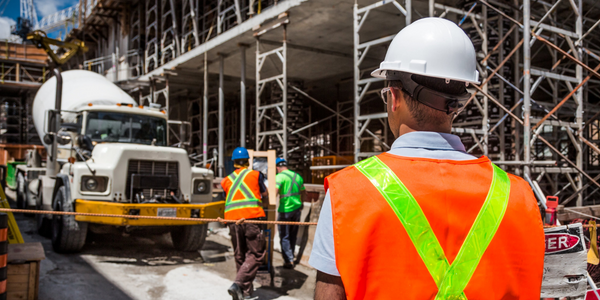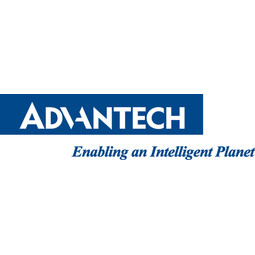
技术
- 自动化与控制 - 人机界面 (HMI)
- 自动化与控制 - 监督控制和数据采集 (SCADA)
适用行业
- 建筑与基础设施
适用功能
- 商业运营
用例
- 楼宇自动化与控制
客户
未公开
关于客户
亚洲的创意公园
挑战
在 1970 年代的能源危机期间,建筑行业发生了翻天覆地的变化,因为它更加关注节约能源的理念,并引入了建筑管理系统 (BMS) 和楼宇自动化系统 (BAS) 的术语。近年来,持续上涨的能源价格和减碳问题也进一步刺激了BMS的开发和部署。然而,早期的系统体积庞大、用户不友好、不可靠且非常昂贵。随着计算机化的到来,BMS模拟信号数字化,可以远距离通信,也便于楼宇管理过程,这些问题变得越来越少。由于管理功能多、专业知识广,现代BMS相当复杂.成功的楼宇管理不仅需要链接到大量设备,还需要考虑软件对预期应用的适用性。 BMS 配备基于 Web 浏览器的人机界面 (HMI) 和监控和数据采集 (SCADA) 软件包,提供高度电子精度的自动化、集中和无人值守管理,可以全面控制建筑物的机械设备。和电气设备,从而有效地监控能源消耗,从而提供一个舒适、安全和有保障的环境。物业管理面临着各种复杂的挑战,降低运营成本对业主来说变得越来越重要。因此,越来越多的新建和改装建筑被设计为使用更少的能源并专注于建筑的性能。一家系统集成商正在帮助一家建筑商为其在亚洲创意园区的最新建设项目实施先进的 BMS。该建筑楼高14层,地下四层,占地面积近十万平方米,包含商场、酒店客房层和办公层三个截然不同的板块。为了提供最佳的能源管理,该 BMS 需要能够监控各种设施,包括空调、电力系统、管道系统、消防系统、通风、电梯、照明、花园浇水等。同时,在一个主控室使用一个具有足够数量节点的系统来管理三个不同的地方是一个关键要求,但每个地方都必须有自己的专用系统,并且可以独立控制而不会相互干扰,以节省实施成本.由于需要监控多个区域,因此会有数万个检测点,新系统还需要提供远程控制功能,以便楼宇管理人员或巡逻人员可以实时查看各种设施的状态并进行处理使用手持或移动设备的问题。
解决方案
除了采用研华的 DDC 控制器和 BAS-3000 系列远程 I/O 模块连接建筑物内外的各种设备,并采用 12" 工业面板作为机电柜的现场 HMI 终端,该解决方案的核心是 HMI/SCADA 软件。研华 WebAccess 是一个多层网络架构系统,其几乎无限的节点允许用户将大量远程客户端链接到中央服务器。基于统一的能源管理框架和区域责任理念,系统分为三个BAS子系统(每个子系统约12000个客户),分别管理店铺、酒店和办公区域,楼宇经理可以从控制中心监督子系统的运行情况,每个子系统可以单独运行平时需要时互相支持动态显示提供了刷新图表状态、实时数据、历史趋势的机制和报警信息。通过标准的网络浏览器或移动客户端,用户可以使用平板电脑远程查看、控制和配置系统。为防止未经授权的数据更改,WebAccess 支持多种权限限制显示和数据访问,以增强系统安全性。此外,该SCADA系统可以根据用户的运营策略,自动开启或关闭设施,以最低的成本维持最佳的运营条件。传统的定期维护和大修(每六个月)也会根据设备的运行时间而改变。适当的维护做法可以大大节省人力,提高工作效率。警报或故障通知可以通过多种方法提供,例如立即在屏幕上显示或向经理发送短消息、电子邮件和报告。因此,负责人可以快速发现故障,从而快速排除问题,确保建筑物始终高效运行。
数量效益

Case Study missing?
Start adding your own!
Register with your work email and create a new case study profile for your business.
相关案例.

Case Study
IoT System for Tunnel Construction
The Zenitaka Corporation ('Zenitaka') has two major business areas: its architectural business focuses on structures such as government buildings, office buildings, and commercial facilities, while its civil engineering business is targeted at structures such as tunnels, bridges and dams. Within these areas, there presented two issues that have always persisted in regard to the construction of mountain tunnels. These issues are 'improving safety" and "reducing energy consumption". Mountain tunnels construction requires a massive amount of electricity. This is because there are many kinds of electrical equipment being used day and night, including construction machinery, construction lighting, and ventilating fan. Despite this, the amount of power consumption is generally not tightly managed. In many cases, the exact amount of power consumption is only ascertained when the bill from the power company becomes available. Sometimes, corporations install demand-monitoring equipment to help curb the maximum power demanded. However, even in these cases, the devices only allow the total volume of power consumption to be ascertained, or they may issue warnings to prevent the contracted volume of power from being exceeded. In order to tackle the issue of reducing power consumption, it was first necessary to obtain an accurate breakdown of how much power was being used in each particular area. In other words, we needed to be able to visualize the amount of power being consumed. Safety, was also not being managed very rigorously. Even now, tunnel construction sites often use a 'name label' system for managing entry into the work site. Specifically, red labels with white reverse sides that bear the workers' names on both sides are displayed at the tunnel work site entrance. The workers themselves then flip the name label to the appropriate side when entering or exiting from the work site to indicate whether or not they are working inside the tunnel at any given time. If a worker forgets to flip his or her name label when entering or exiting from the tunnel, management cannot be performed effectively. In order to tackle the challenges mentioned above, Zenitaka decided to build a system that could improve the safety of tunnel construction as well as reduce the amount of power consumed. In other words, this new system would facilitate a clear picture of which workers were working in each location at the mountain tunnel construction site, as well as which processes were being carried out at those respective locations at any given time. The system would maintain the safety of all workers while also carefully controlling the electrical equipment to reduce unnecessary power consumption. Having decided on the concept, our next concern was whether there existed any kind of robust hardware that would not break down at the construction work site, that could move freely in response to changes in the working environment, and that could accurately detect workers and vehicles using radio frequency identification (RFID). Given that this system would involve many components that were new to Zenitaka, we decided to enlist the cooperation of E.I.Sol Co., Ltd. ('E.I.Sol') as our joint development partner, as they had provided us with a highly practical proposal.

Case Study
Splunk Partnership Ties Together Big Data & IoT Services
Splunk was faced with the need to meet emerging customer demands for interfacing IoT projects to its suite of services. The company required an IoT partner that would be able to easily and quickly integrate with its Splunk Enterprise platform, rather than allocating development resources and time to building out an IoT interface and application platform.

Case Study
Bridge monitoring in Hamburg Port
Kattwyk Bridge is used for both rail and road transport, and it has played an important role in the Port of Hamburg since 1973. However, the increasing pressure from traffic requires a monitoring solution. The goal of the project is to assess in real-time the bridge's status and dynamic responses to traffic and lift processes.

Case Study
Bellas Landscaping
Leading landscaping firm serving central Illinois streamlines operations with Samsara’s real-time fleet tracking solution: • 30+ vehicle fleet includes International Terrastar dump trucks and flatbeds, medium- and light-duty pickups from Ford and Chevrolet. Winter fleet includes of snow plows and salters.

Case Study
Condition Based Monitoring for Industrial Systems
A large construction aggregate plant operates 10 high horsepower Secondary Crusher Drive Motors and associated conveyor belts, producing 600 tons of product per hour. All heavy equipment requires maintenance, but the aggregate producer’s costs were greatly magnified any time that the necessary maintenance was unplanned and unscheduled. The product must be supplied to the customers on a tight time schedule to fulfill contracts, avoid penalties, and prevent the loss of future business. Furthermore, a sudden failure in one of the drive motors would cause rock to pile up in unwanted locations, extending the downtime and increasing the costs.Clearly, preventative maintenance was preferable to unexpected failures. So, twice each year, the company brought in an outside vendor to attach sensors to the motors, do vibration studies, measure bearing temperatures and attempt to assess the health of the motors. But that wasn’t enough. Unexpected breakdowns continued to occur. The aggregate producer decided to upgrade to a Condition Based Monitoring (CBM) sensor system that could continually monitor the motors in real time, apply data analytics to detect changes in motor behavior before they developed into major problems, and alert maintenance staff via email or text, anywhere they happened to be.A wired sensor network would have been cost prohibitive. An aggregate plant has numerous heavy vehicles moving around, so any cabling would have to be protected. But the plant covers 400 acres, and the cable would have to be trenched to numerous locations. Cable wasn’t going to work. The aggregate producer needed a wireless solution.




